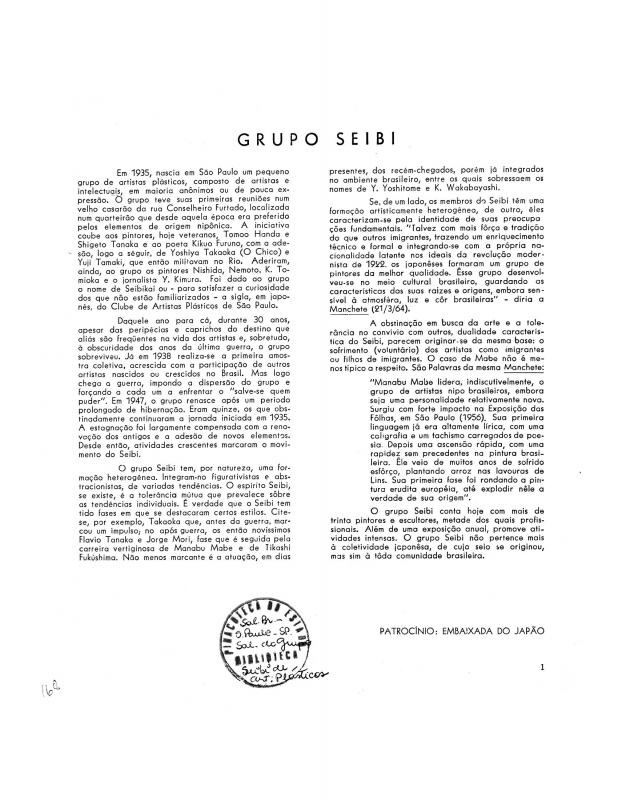The Japanese painter Yoshiya Takaoka (1909–78), who lived in São Paulo, talks about his life and his art career prior to the opening of Grupo Seibi - Grupo Guanabara. Década 35 a 45, the 1977 exhibition organized by the Fundação Armando Álvares Penteado in São Paulo. Takaoka, a Japanese immigrant, was an important member of the Seibi group due to his involvement in several painters’ associations and because he taught a number of Brazilian artists who started their careers in São Paulo in the 1940s. His interview was recorded on a cassette tape and parts of it are inaudible. In spite of that, he provides information about the creation of important art groups in São Paulo and Rio de Janeiro between the 1930s and 1950s.
During that period the works produced by the Santa Helena, Bernardelli, Seibi, and Quinze groups were mainly influenced by French Impressionism and German Expressionism. These artists were, by and large, focused on producing landscapes and still life paintings. Groups of this kind were often formed by Japanese and European (mainly Italian) immigrants and their descendants who created an international art milieu in provincial cities.
“Grupo Seibi,” the article published in 1964 in the catalogue for the 8º Salão de Artes Plásticas do “Grupo Seibi,” sketches the history of the group [see doc. no. 1110646]. The professor and historian Walter Zanini describes the Japanese-Brazilian artists in his essay “A colônia japonesa e as artes” [doc. no. 1111409]. One of the members of the association, Tomoo Handa, recalls how the group got started and introduces the 1ª Ata do Grupo Seibi. Ibiapaba Martins writes about the Grupo Quinze, or Grupo do Jacaré. There are a number of documents that refer to another Japanese-Brazilian artists’ group in São Paulo called the Grupo Guanabara during the 1950s. The historian Maria Cecília Lourenço also provides an overview of these Japanese-Brazilian groups during that same decade, in an article that was published in the eponymous catalogue for the exhibition at the Pinacoteca do Estado de São Paulo. (4)


